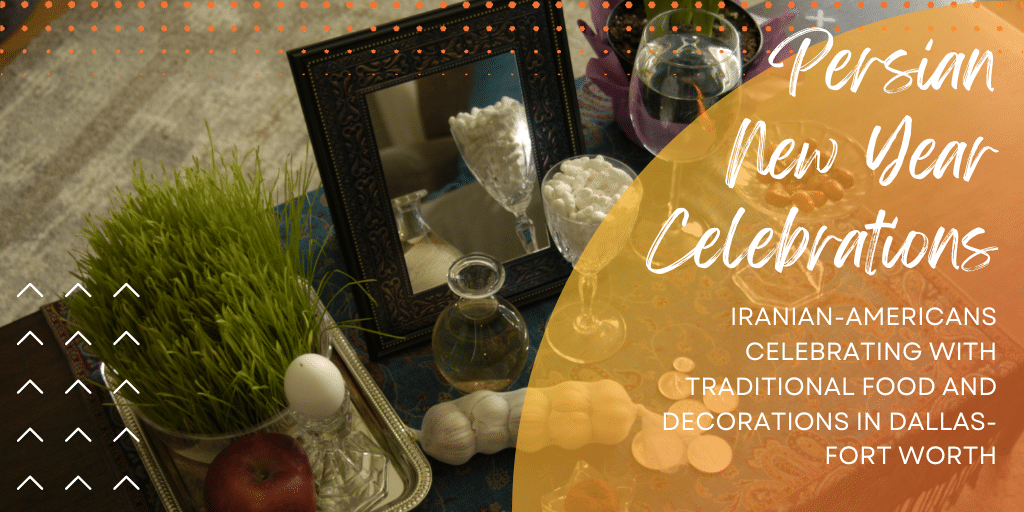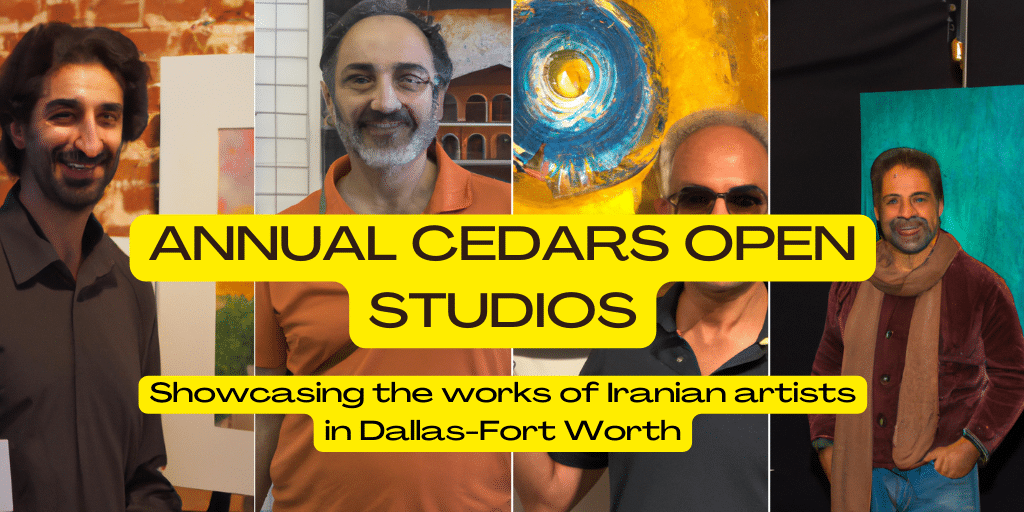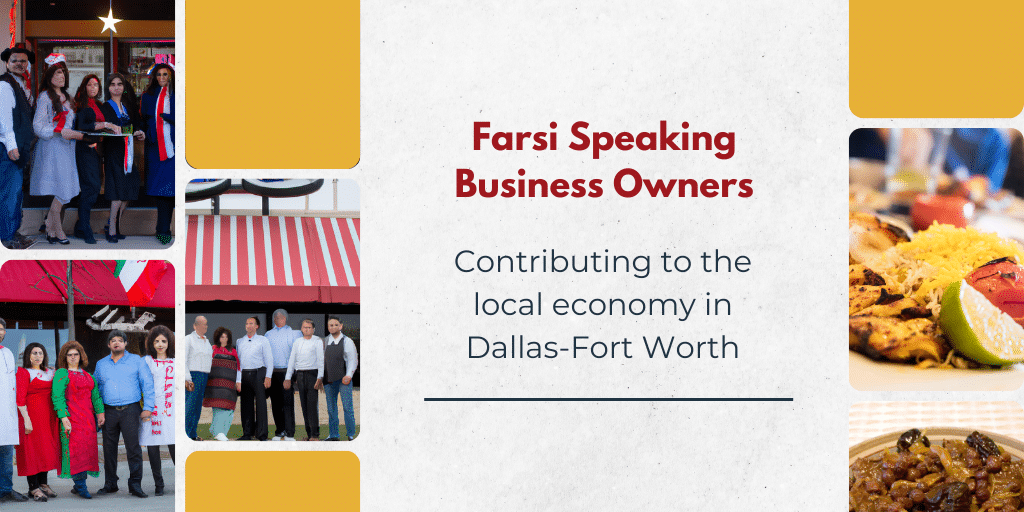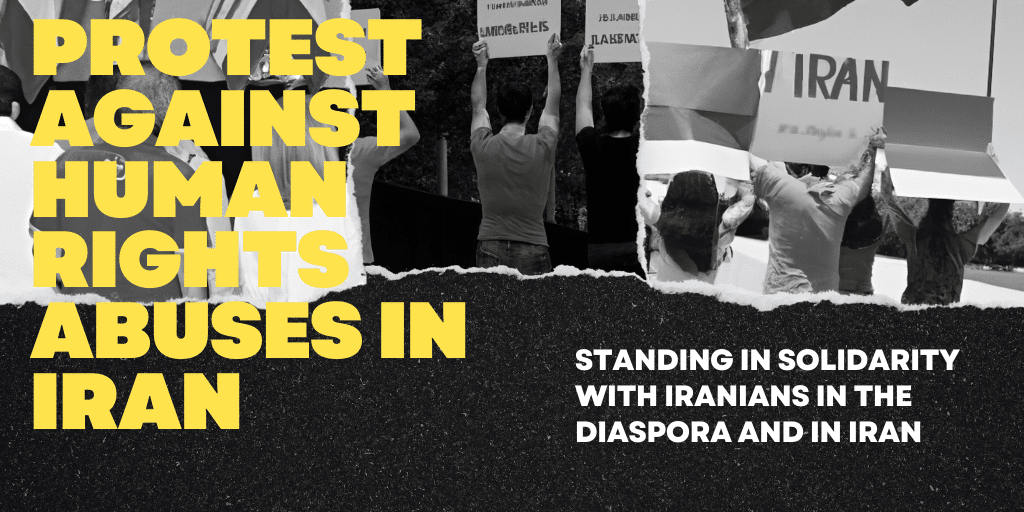
The Dallas-Fort Worth metropolitan area is home to a diverse array of immigrants from different parts of the world. According to the 2000 Census, the Dallas-Fort Worth metroplex had about 5,000 Iranians. In 2005, 5,314 immigrant visas were issued to Iranians, and some of them may have settled in Dallas. The U.S. Census Bureau reports that 3.9% of Dallas’s population is of Asian origin, but this category includes many other groups besides Iranians. Dallas ranks ninth on the list for largest Iranian communities in the U.S. with 5,000 Iranians. However, compared to other immigrant groups in Dallas, Iranians may be considered a relatively large and influential community. According to a website called Stacker, the biggest sources of immigrants to Dallas in 2019 were Mexico, India, El Salvador, Vietnam, and China. Iranians were not among the top 20 sources of immigrants to Dallas. However, Iranians have formed several organizations and events to promote their culture and interests in the city, such as IranzVoiceDFW, the Iranian-American Community of North Texas, and the Annual Cedars Open Studios.
There may be different reasons for Iranian immigrants to live in Dallas, but some possible factors are political and economic instability in Iran, especially after the 1978-1979 revolution that ended the monarchy and established the Islamic Republic. Many Iranians fled the country to seek freedom and opportunity elsewhere. Educational and professional achievements of Iranian immigrants, who tend to have higher levels of education and skills than the national average. Many Iranians may have chosen Dallas as a place to pursue their careers or studies, as the city offers a diverse and dynamic economy and a high quality of life. Social and cultural ties with other Iranian immigrants, who may have formed a supportive and vibrant community in Dallas. Many Iranians may have followed their relatives or friends who already settled in the city, or may have been attracted by the existing organizations and events that celebrate their heritage and identity.

Cultural Contributions of the Farsi Population in Dallas-Fort Worth
The Farsi population in Dallas-Fort Worth has made significant cultural contributions to the city, such as the Annual Cedars Open Studios. This event invites visitors to explore artists’ studios and art galleries in the Cedars neighborhood, which has a significant Iranian presence. The Iranian-American Community of North Texas also organizes cultural and educational events, such as Persian New Year celebrations, lectures, and language classes. Many Iranians also own and operate businesses in the city, such as restaurants, grocery stores, and jewelry shops, which contribute to the local economy.

Economic Contributions of the Farsi Population in Dallas-Fort Worth
The Farsi population in Dallas-Fort Worth has also made significant economic contributions to the city. According to a report by New American Economy, immigrants in Dallas-Fort Worth contribute $37.5 billion to the local GDP and pay $12.8 billion in taxes. Iranian immigrants are part of this economic success, as they own and operate businesses, work in various industries, and contribute to the city’s innovation and entrepreneurship.

Challenges Facing Iranians in Iran and in the Diaspora
Despite their resilience and commitment, Iranians in Iran and in the diaspora face various challenges, such as political oppression, gender apartheid, systematic discrimination of women, forced religion, and lack of freedom and justice. The recent poisonings of Iranian schoolgirls and other human rights abuses have brought renewed attention to these challenges and sparked protests and activism worldwide. The Farsi population in Dallas-Fort Worth has joined these efforts and demanded further sanctions against the Iranian regime, as well as support for the MAHSA Act and House Resolution 589. By standing in solidarity with their compatriots in Iran, they hope to raise awareness and pressure the US government to take action against the regime’s atrocities.
Moreover, Iranians in the diaspora face unique challenges related to their identity, culture, and integration into their host societies. The Farsi population in Dallas-Fort Worth is no exception, as they navigate their way in a diverse and dynamic metropolitan area while preserving their heritage and contributing to their communities. While many Iranians have succeeded in establishing businesses, pursuing education, and participating in civic life, others may encounter discrimination, stereotypes, or cultural barriers that limit their opportunities and well-being.
To address these challenges, Iranians in Dallas-Fort Worth and elsewhere have formed various organizations and networks that provide social, cultural, and professional support. For example, the Iranian-American Community of North Texas offers educational and outreach programs, as well as advocacy for issues affecting the Iranian community. The Annual Cedars Open Studios has featured the creative and diverse works from of Iranian artists and performers, and fosters collaboration and dialogue among different communities. IranzVoiceDFW, as mentioned earlier, has emerged as a leading voice for Iranian activists and human rights defenders in the region.
These organizations and events not only enrich the lives of Iranians in Dallas-Fort Worth but also contribute to the cultural, economic, and social fabric of the metropolitan area. By promoting mutual understanding, tolerance, and respect among diverse groups, they help build bridges and break down barriers that divide us. They also demonstrate the resilience, creativity, and vitality of the Farsi population in Dallas-Fort Worth, and the contributions they make to their communities and society at large.
Conclusion
The Farsi population in Dallas-Fort Worth is a vibrant and active community that faces both opportunities and challenges. While they have come a long way in establishing themselves and pursuing their goals, they also encounter obstacles related to their identity, culture, and human rights. By participating in protests, advocating for legislative action, and promoting cultural events and organizations, they strive to raise awareness, build solidarity, and foster positive change. As we celebrate their contributions and achievements, let us also support their aspirations and struggles, and work together towards a more just, equitable, and inclusive society for all.
How the Vibrant Farsi Population in Dallas-Fort Worth is Condemning Human Rights Abuses in Iran
As a leading provider of Farsi translation services, 24 Hour Translation Services is proud to highlight the cultural and economic contributions of the Farsi population in Dallas-Fort Worth. This diverse community has made significant strides in establishing themselves in the metropolitan area, but also faces unique challenges related to their identity and culture. Through their participation in cultural events, community organizations, and advocacy for human rights, they have become a vibrant and influential presence in Dallas-Fort Worth. We support their efforts to raise awareness and promote positive change, and stand in solidarity with their aspirations and struggles.
Frequently Asked Questions
IranzVoiceDFW is a local organization in Dallas-Fort Worth formed to promote Iranian culture and interests, as well as raise awareness about human rights abuses in Iran.
Women’s rights abuses, such as gender apartheid and systematic discrimination against women, are among the most pressing issues in Iran. There have also been reports of forced religion, execution, and mistreatment of protestors.
ome Iranian schoolgirls wear gas masks in classrooms to protect against chemical poisonings. The protesters in Dallas wore gas masks in solidarity with these students and to bring attention to their plight.
The MAHSA Act, also known as House Resolution 589, is a bill that seeks to strengthen sanctions against Iran and cripple the Islamic Republic. IranzVoiceDFW and other grassroots groups are urging their representatives to pass this bill.
There may be different reasons for Iranian immigrants to live in Dallas, but some possible factors are political and economic instability in Iran, higher levels of education and skills among Iranian immigrants, and social and cultural ties with other Iranian immigrants who have formed a supportive and vibrant community in Dallas.
Some of the organizations and events include IranzVoiceDFW, the Iranian-American Community of North Texas, and the Annual Cedars Open Studios. Iranians have also owned and operated businesses in the area, making cultural, economic, and social contributions to the Dallas-Fort Worth metropolitan area.
Compared to other immigrant groups in Dallas, Iranians may be considered a relatively large and influential community. Dallas ranks ninth on the list for largest Iranian communities in the U.S. with 5,000 Iranians. However, Mexicans, Indians, Salvadorans, Vietnamese, and Chinese are among the top 20 sources of immigrants to Dallas.
Iranians in Iran face political and economic instability, as well as human rights abuses. Iranians in the diaspora may face challenges related to language barriers, cultural adjustment, and discrimination.
International Women’s Day is a global celebration of women’s achievements and a call to action for gender equality. The day has been observed since the early 1900s and is marked by events and activities that highlight women’s contributions to society.
The Iranian-American Community of North Texas is a nonprofit organization that seeks to promote Iranian culture and foster friendship and understanding among people of all cultures. The organization hosts cultural events, educational programs, and social activities for its members and the community.
Gender apartheid refers to a system of segregation or discrimination based on gender, in which one gender is treated as inferior or subjugated to the other. In Iran, women face numerous restrictions on their freedom and opportunities, as well as systemic discrimination and violence.
The Annual Cedars Open Studios is an event in Dallas that showcases the work of local artists, including many Iranian artists. The event offers a unique opportunity for the community to engage with art and culture, and to support local artists and businesses.
There are many ways to get involved in supporting Iranian human rights, including supporting local organizations like IranzVoiceDFW and the Iranian-American Community of North Texas, advocating for legislative action like the MAHSA Act and House Resolution 589, and spreading awareness through social media and other channels.
One way to support these organizations is by volunteering your time and skills, whether it be through event planning, fundraising, or outreach efforts. You can also attend events and protests organized by these groups to show your support and solidarity.
Another way to support Iranian human rights is by contacting your local representatives and urging them to support legislative action that will hold the Iranian regime accountable for its human rights abuses. The MAHSA Act and House Resolution 589 are two bills that can help achieve this goal, and you can reach out to your representatives and urge them to support these bills.
Finally, spreading awareness through social media and other channels can help bring attention to the challenges facing Iranians in Iran and in the diaspora. You can share news articles, videos, and personal stories to help raise awareness and educate others about the human rights abuses happening in Iran. By working together and taking action, we can help bring about positive change and support the Iranian people in their fight for freedom and justice.
Alexander’s conquests introduced Greek culture and language to the region, which had a lasting impact on Persian and Afghan culture and language.
Yes, there are several social media platforms catering to Persian speaking people, such as Telegram, Instagram, and Aparat.
Aparat is a video sharing and hosting website popular in Iran.
Yes, homosexuality is illegal and considered a taboo topic in Iran.
Censorship and limited access to social media platforms are among the challenges faced by online communities in Iran and Afghanistan.
The Universal Declaration of Human Rights is a document adopted by the United Nations General Assembly that outlines basic human rights and freedoms.
Iranian immigrants are a part of the diverse array of immigrants in Dallas-Fort Worth who contribute to the local economy. They own and operate businesses such as restaurants, grocery stores, and jewelry shops, which provide jobs and contribute to the local economy. According to a report by New American Economy, immigrants in Dallas-Fort Worth contribute $37.5 billion to the local GDP and pay $12.8 billion in taxes.
Iranians in the diaspora face various challenges related to their identity, culture, and integration into their host societies. Some may encounter discrimination, stereotypes, or cultural barriers that limit their opportunities and well-being. Iranians also face challenges related to political oppression, gender apartheid, systematic discrimination of women, forced religion, and lack of freedom and justice in Iran.
The Iranian-American Community of North Texas, IranzVoiceDFW, and the Annual Cedars Open Studios are some of the organizations that exist to support the Iranian community in Dallas-Fort Worth. These organizations provide social, cultural, and professional support to the community, including educational and outreach programs, advocacy for issues affecting the Iranian community, and cultural events.
The Persian-speaking community in Dallas-Fort Worth has made significant cultural and economic contributions to the city. They have organized cultural events such as the Annual Cedars Open Studios, which invites visitors to explore artists’ studios and art galleries in the Cedars neighborhood. Persian-speaking immigrants also own and operate businesses such as restaurants, grocery stores, and jewelry shops, which contribute to the local economy.
The Persian language is spoken by a significant community of Iranians and other Persian-speaking immigrants in Dallas-Fort Worth. It is also one of the oldest and most influential languages in the Middle East, with a rich cultural and literary heritage. Persian language and culture are celebrated through events such as the Annual Cedars Open Studios and language classes offered by the Iranian-American Community of North Texas.
Social media platforms provide a real-time and interactive way for Iranians and other Persian-speaking immigrants in Dallas-Fort Worth to connect and share information. They can use social media accounts to promote cultural events and share photos and videos of their activities. Social media platforms also offer opportunities for social media marketing to promote Iranian-owned businesses and products to a wider audience.
The Universal Declaration of Human Rights is a document adopted by the United Nations General Assembly in 1948 that outlines fundamental human rights and freedoms that are inherent to all people, regardless of their race, gender, nationality, or sexual orientation. The Declaration is relevant to the article because it highlights the importance of human rights and freedoms, which are relevant to the challenges facing Iranians in Iran and in the diaspora, including those in Dallas-Fort Worth.
